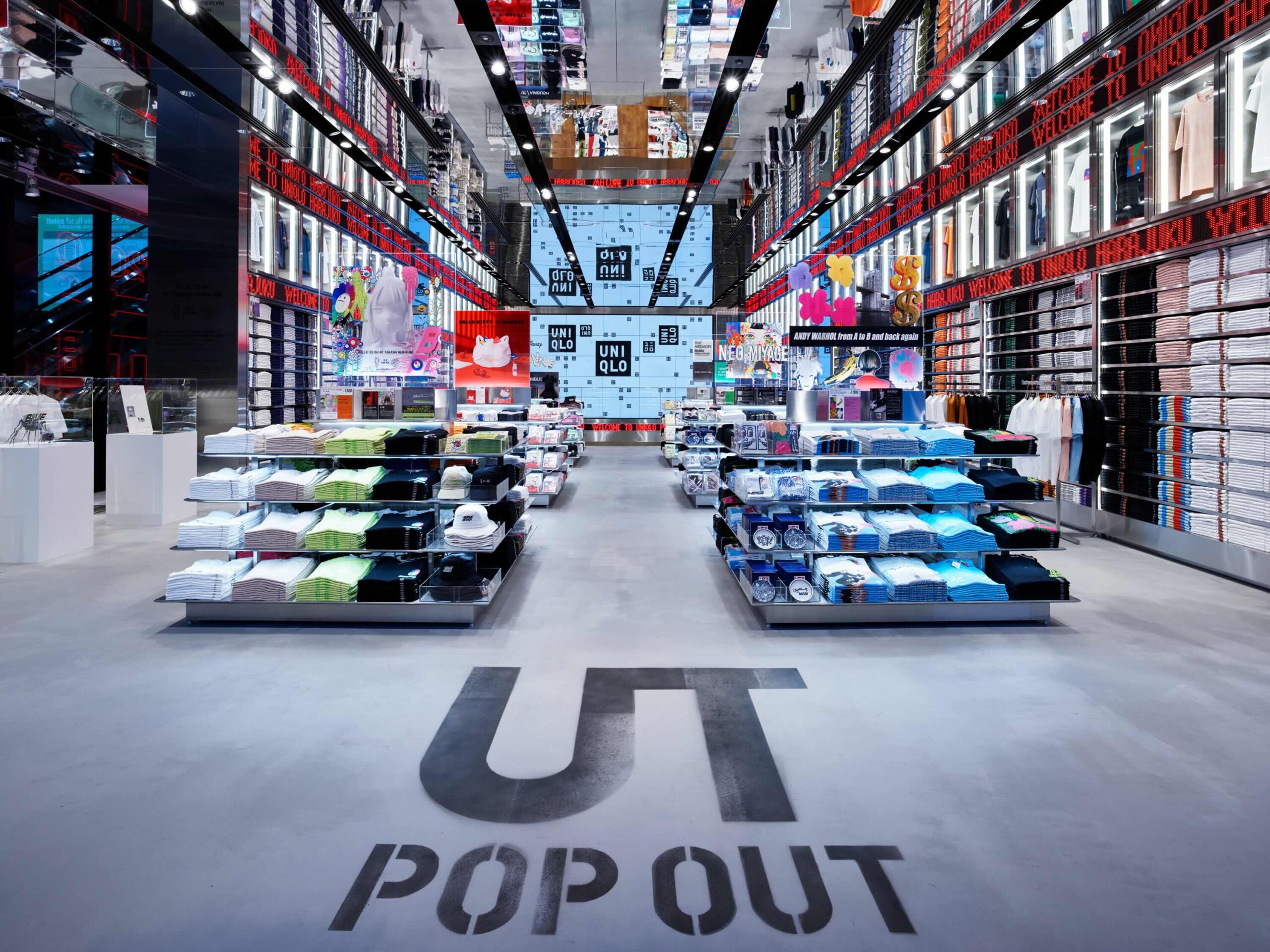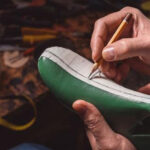Sanchit Jaisinghani, a young graduate from Warwick University Inspired by an incident, undertook a research on reselling of sneakers.
The research paper presents the concept of the reselling of sneakers. The purpose of the study was to investigate perceptions towards second-hand and identify the brands that command the highest goodwill (price-premium) in the secondary market. Sanchit identifies key factors – innovation, age of the shoe, influencer endorsement & blog presence and establishes the drivers that have the highest impact on price premium of a release.
What intrigued you to towards sneakers?
My introduction to ‘sneaker-culture’ was on a trip to New York, where I saw people fanatically lined up for 3-4 blocks, awaiting the release of a “Yeezy”; a sneaker released by Adidas in partnership with rapper, Kanye West. On deeper probing, I realized that sneaker launches are an exclusive event, and the possessors of the pairs might hold onto to their possession for decades to come but also some of them sell to the fans who couldn’t attend, for over four times their price”.
What motivated you to undertake this study?
I did not witness sneaker craze until my first year of University. Here, my friend and I were stopped by a fellow student, who was willing to pay my friend £600, for a pair of one-year old used sneakers which had costed him £220. This bewildered me by piquing my interest; made me question the economics behind the demand for collectable sneakers, what influences this demand and which brands command the strongest resale prices.
Where did you collect your data from?
Data was collected from the interviews done with individuals in the age range from 12 plus to 60, living in London. Results showed that affordability, quality and design variety are the factors that affect second-hand trade. It was also found that MEN are the major consumers of second-hand shoes. The young aged stated that they purchase these second-hand shoes as they find them as more fashionable items.
Upon reviewing the history, market trends and the highlighted preferences in this collectables industry, the findings that Sanchit attempts to address are:
Brands that command the highest goodwill (price-premium) in the secondary market
Category of release that has the highest price premium (Retro/Collaboration)
Key factors – innovation, age of the shoe, influencer endorsement & blog presence, has the highest impact on price premium of a release
Factors Considered
Defining the “hype” via price premium
Price premium= (Average Resale Price – Retail Price)/Retail Price
Price premium being paid by buyers indicates how much “hype” a sneaker release commands in the secondary market. This provides a percentage that is either positive (under profit-making releases) or negative (under loss-making releases) over and above the retail price.This accounts for average prices people have paid for a release on StockX. Therefore, indicating how much people are willing to pay above the retail price and thus analyzing the reason for such premiums.
Retro Release( Retro)
This factor accounts for sneaker releases which are re-releases of sneakers which were originally launched between 1990s to 2010. This variable is a dummy variable and captures the value 1, for all retro releases, and 0 for non-retro releases. It considers how strong the past reputation of a brand is and how much this reputation is valued in terms of impact on price premium today. Conventional wisdom tells us that retro collectables should not be valued higher in the market since it may not capture younger audiences due to outdated trends, leading to a belief that retro only reign in some of the older crowds who were present during the first launch of these sneakers. We can state intuitively that retro sneakers will be valued more by people above the age group of 25, i.e. those who were aspiring children at the time of the original releases. Therefore, the retro variable when compared to the collaboration factor should also give us insight into whether exclusively created collaborations command more “hype” or if retro/ vintage sneakers command greater hype. Vintage and retro sneakers are usually very limited in numbers due to most of the sneakers being used and not in unworn conditions therefore not eligible for this study. This variable is a dummy variable.
Collaboration release [collab]
Collaboration is when two brands, one mainstream sneaker brand (such as Nike, Adidas, New balance, etc.) collaborates with a non-competing brand, which usually are niche boutiques (such as Off-white, Supreme, etc.) or even with famous entertainers (example DJ Khaled, Travis Scott), combine efforts to create a sneaker. The collaborators (niche boutiques/artists) are in charge of the design, materials, color, selection from preexisting silhouettes, while the mainstream company is responsible for the manufacturing of the sneakers. Furthermore, if a brand launches two colorways of the same model during a collaboration project, this study accounts for the colorways as 2 different entries, since one colorway will have always a higher premium compared to the other.
Innovation
This factor accounts for design and technology improvement of a sneaker release or the introduction of an entirely new shape of a sneaker by a brand. The market is highly saturated and accounts for new releases almost daily. We have accounted for innovation in sneakers as: new colorways on pre-existing silhouettes, new silhouettes created (by either the mainstream brands or their collaborators) or new technology in releases (which includes new lacing systems, insole material and outsole material). This factor highlights how successful and active every brand’s R&D department is in listening to its customers.
Artist Influence [artist]
Since collectable-sneakers’ resale market is driven by hype and controlled by narrative, social media influencers who were recognised as “sneaker” influencers were tracked, these included American and European sports’ athletes, music artists, fashion designers and actors (with 1 million followers and over on Instagram). For instance, if Travis Scott (rap artist) posted a picture of himself wearing his-own collaboration sneaker with Nike then we will not consider that as “artist influence” by Travis Scott, however, if he is photographed in a different Nike sneaker release which he did not collaborate on, then this variable will be active for that sneaker release. The reason for this specification is to avoid recording twice for the same artist’s influence; once under “collab” and second under “artist”. Since endogeneity can be a problem in this model (wherein we don’t understand whether the artist is influencing the price of a sneaker or if the artist is wearing the sneaker due to its pre-existing value), therefore all influencer posts are recorded only if they were posted within one month of the launch date of a sneaker. Since Instagram did not exist during the early 2000s, we have also accounted for past articles and magazine covers that existed as the social medium at the time.
Blog Presence [blog]
Every investment market has its source of primary information, whether it is the newspapers, News channels, Financial Times, or stock exchange. The sneaker resale market also has certain indicators which highlight if the resale value of a sneaker release will exceed its retail price or not. Through the survey I was able to identify that in sneaker resale market, primary source of information for sneakerheads to find out about sneakers is Sneaker blogs on Instagram. Based on this information a list for sneaker blogs with most likes, at least 500,000 followers, maximum longevity was needed to be made so that tracking of releases which are endorsed by these blogs can be made easier. The principle of ensuring exogeneity is replicated here as well, therefore, any pictures or news uploaded on blogs within one month’s time from the launch of a particular release is considered for the release as having blog presence.
Age [months]
Time plays a key role in determining which type of sneakers command higher resale prices, therefore, higher profit premiums. As a variable it holds special significance since it accounts for the age of a release. Time can play a detrimental or beneficial role in the resale profits of releases. Some older pairs lose value as they depreciate in condition and therefore are less wearable, however, there are fewer pairs left of older unworn sneakers. This is a continuous variable.
Analysis of the Model
Innovation increases resale prices on average by 154%.
Blog presence increases resale prices on average by 146.1%.
Artist Influence increase resale prices on average by 120.8%.
Observations
Innovation by a brand displayed the highest price-premium among external and internal factors. Indicated from the regression analysis, a brand’s improvement of product and ensuring that its consumers curiosity is maintained is what eventually dictates goodwill for a release in the resale market.
Nike has been considered the biggest brand in the sneaker community due to its premium product quality, its selection of representatives for the brand such as trendy and popular global stars of sports, movies and music so as to generate maximum attention while also making sure that it only collaborates with the industry leaders. This along with its proactive approach of sending blogs early releases of sneakers to be displayed and reviewed makes its product widely desired while ensuring more to be desired through surprise launches and “member exclusive” products. With a mixture of collaborative and retro releases being launched in limited capacities throughout the year, Nike manages to retain Resale Price Maintenance. This not only ensures that the demand stays high for limited sneakers but also allows Nike to increase retail prices for these ‘limited-releases’ while continuously innovating ‘generally-released’ sneakers. This further helps them capture artist and blog endorsements while gaining back on some price-sensitive customers they may have lost due to price hikes in Retro and collaborative releases. Therefore, capturing mainstream audiences in the market while further creating artificial markets for limited/collectable sneakers.
As observed above retro sneakers command a higher price-premium than collaborative releases, the extent of which may vary from brand to brand. Since fashion and technology go hand-in-hand when it comes to the sneaker industry there should be higher premiums for newer releases and models, such as collaborations, however this is not observed. Sneaker brands acknowledge that what made them popular initially, i.e. retro releases, need to be brought back to capture the imaginations of newer consumers, while also bringing back past customers who may have missed out on particular releases. While most collaborations yield high resale merely due to exclusivity, retro sneakers command higher resale prices due to brands correctly selecting “classics” to launch, which helped them elevate to industry leaders.
These models display unbiased promising results and can be used to ensure approximate appraisal of collections. However, they do not account for the degree of innovation and are unable to highlight the magnitude of influence that each artist has on a release. They also do not consider factors that may increase resale prices post one month of the launch of a release. For instance, an artist that influences the resurgence of a release years after its initial launch is not accounted for in this study.
Conclusion
The model created for this study can guide resellers and potential investors to understand how to value information and news in the market. It explains resellers to how to value endorsements and how to form predictions of future resale prices based on this type of news. It also provides sneaker collectors with tools to correctly value or calculate the appraisal of their collections in case of a sale or insurance. Nowadays, insurance companies are providing plans throughout the world in countries including USA, UK, Japan, China and India, this is an acknowledgement by financial service providers that the sneaker resale market has great significance in today’s times and is seen not only as a source of investment but also hedge-able commodities which need to be secured. Companies such as Bajaj Financial Services (Shoe Insurance) and American International Group (Wearable Collections Insurance) have created comprehensive policies for “wearable collections” of high-value and collectable sneakers. This was highlighted in the statement by the AIG private client group in their policy, “AIG recognizes the importance and meaning of your wearable collections and offers coverage as unique as your style”. This indicates that major financial service providers are taking advantage of this trend while ensuring that they are participants of eating a (rhetorical) piece of this huge pie.
Resellers in the market buy stock sneakers early through connections, back door channels (due to lack of proper regulation) and online BOTSs which are used by resellers in the market to buy multiple pairs of limited released sneakers. This is unethical, since it concentrates limited releases in hands of a selected few who then control the supply. Resellers then provide the same pairs on resale websites such as StockX by determining resale price since they possess a large stock, thereby sometimes creating a “hoarding premium”. This is the premium that lies in the error term of our study and can vary for different releases, different years and different brands depending further on release specifications such as color, quality and degree of exclusivity (based on number of sneakers produced for the particular release and specific region of the release). Therefore, at a basic level, this study can help give a basis to upcoming sneaker brands to model their businesses after and similarly help us to understand which brand command the highest resale price premium in the secondary market and by extension has the strongest cultural presence and following.
These models are also restricted by the small sample size. As well as fail to account for endorsements by blogs and artists post one month of launch of a release. Thereby, these models do not account for endorsements made after the one-month mark of the launch which also may affect the profit premiums, that premium also lies within the error terms. These can be extended in the future with some help from consignment stores and sneaker designers to appropriately grade the releases based on a similar way that the collectable comic books have been graded in the paper mentioned. However, finding reliable data for used sneakers and creating samples for each different grade for each release will be a strenuous task which may create a selection bias (since only highly coveted sneakers will be sold despite poor conditions). Since some sneaker releases will gain value, which were not initially perceived as coveted but due to their limited numbers left, became coveted based off the principle of sheer lack of supply of vintage sneakers. The final takeaway from this study is sneaker releases that should be considered by investors to invest in, via retail outlets, should be innovative, retro released pairs from Nike, as these categories highlight maximum price-premiums.













